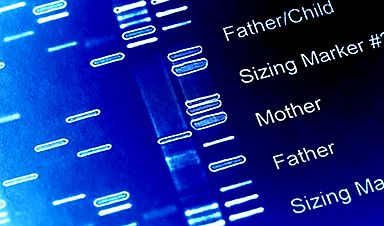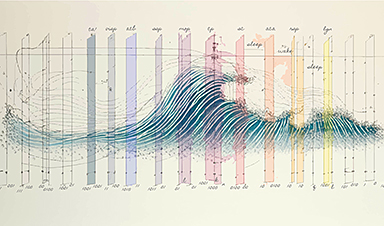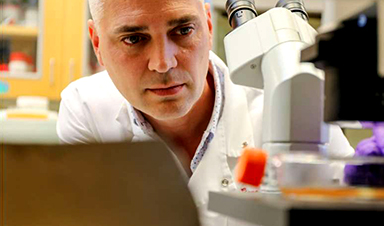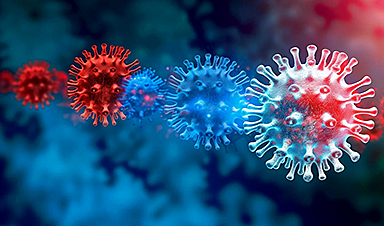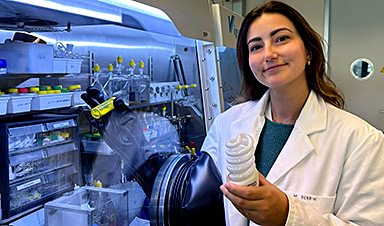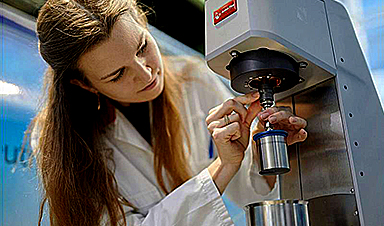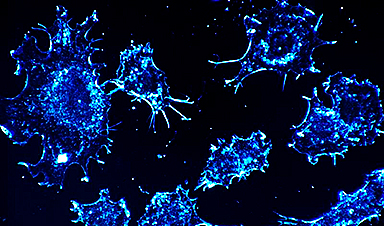Researchers at Harvard Medical School and National Cheng Kung University in Taiwan have created a new artificial intelligence model that could help doctors make more informed decisions about treatment and prognosis for patients with colorectal cancer, the second leading cause of cancer deaths worldwide.
The new tool can accurately predict the aggressiveness of a colorectal tumor, the likelihood of survival with and without disease recurrence, and the optimal therapy for the patient, solely by analyzing images of tumor samples, which are microscopic depictions of cancer cells.
Having a tool that answers such questions could help clinicians and patients navigate this wily disease, which often behaves differently even among people with similar disease profiles who receive the same treatment — and could ultimately spare some of the 1 million lives that colorectal cancer claims every year.
The researchers say that the tool is meant to enhance, not replace, human expertise.
“Our model performs tasks that human pathologists cannot do based on image viewing alone,” said study co-senior author Kun-Hsing Yu, assistant professor of biomedical informatics in the Blavatnik Institute at HMS. Yu led an international team of pathologists, oncologists, biomedical informaticians, and computer scientists.
“What we anticipate is not a replacement of human pathology expertise, but the augmentation of what human pathologists can do,” Yu added. “We fully expect that this approach will augment the current clinical practice of cancer management.”
The researchers caution that any individual patient’s prognosis depends on multiple factors and that no model can perfectly predict any given patient’s survival. However, they add, the new model could be useful in guiding clinicians to follow up more closely, consider more aggressive treatments, or recommend clinical trials testing experimental therapies if their patients have worse predicted prognoses based on the tool’s assessment.
The tool could be particularly useful in resource-limited areas both in this country and around the world where advanced pathology and tumor genetic sequencing may not be readily available, the researchers noted.
The new tool goes beyond many current AI tools, which primarily perform tasks that replicate or optimize human expertise. The new tool, by comparison, detects and interprets visual patterns on microscopy images that are indiscernible to the human eye.
The tool, called MOMA (for Multi-omics Multi-cohort Assessment) is freely available to researchers and clinicians.
Extensive training and testing
The model was trained on information obtained from nearly 2,000 patients with colorectal cancer from diverse national patient cohorts that together include more than 450,000 participants — the Health Professionals Follow-up Study, the Nurses’ Health Study, the Cancer Genome Atlas Program, and the NIH’s PLCO (Prostate, Lung, Colorectal, and Ovarian) Cancer Screening Trial.
During the training phase, the researchers fed the model information about the patients’ age, sex, cancer stage, and outcomes. They also gave it information about the tumors’ genomic, epigenetic, protein, and metabolic profiles.
Then the researchers showed the model pathology images of tumor samples and asked it to look for visual markers related to tumor types, genetic mutations, epigenetic alterations, disease progression, and patient survival.
The researchers then tested how the model might perform in “the real world” by feeding it a set of images it had not seen before of tumor samples from different patients. They compared its performance with the actual patient outcomes and other available clinical information.
The model accurately predicted the patients’ overall survival following diagnosis, as well as how many of those years would be cancer-free.
The tool also accurately predicted how an individual patient might respond to different therapies, based on whether the patient’s tumor harbored specific genetic mutations that rendered the cancer more or less prone to progression or spread.
In both of those areas, the tool outperformed human pathologists as well as current AI models.
The researchers said the model will undergo periodic upgrading as science evolves and new data emerge.
“It is critical that with any AI model, we continuously monitor its behavior and performance because we may see shifts in the distributions of disease burden or new environmental toxins that contribute to cancer development,” Yu said. “It’s important to augment the model with new and more data as they come along so that its performance never lags behind.”
Discerning telltale patterns
The new model takes advantage of recent advances in tumor imaging techniques that offer unprecedented levels of detail, which nonetheless remain indiscernible to human evaluators. Based on these details, the model successfully identified indicators of how aggressive a tumor was and how likely it was to behave in response to a particular treatment.
Based on an image alone, the model also pinpointed characteristics associated with the presence or absence of specific genetic mutations — something that typically requires genomic sequencing of the tumor. Sequencing can be time-consuming and costly, particularly for hospitals where such services are not routinely available.
It is precisely in such situations that the model could provide timely decision support for treatment choice in resource-limited settings or in situations where there is no tumor tissue available for genetic sequencing, the researchers said.
The researchers said that before deploying the model for use in clinics and hospitals, it should be tested in a prospective, randomized trial that assesses the tool’s performance in actual patients over time after initial diagnosis. Such a study would provide the gold-standard demonstration of the model’s capabilities, Yu said, by directly comparing the tool’s real-life performance using images alone with that of human clinicians who use knowledge and test results that the model does not have access to.
Another strength of the model, the researchers said, is its transparent reasoning. If a clinician using the model asks why it made a given prediction, the tool would be able to explain its reasoning and the variables it used.
This feature is important for increasing clinicians’ confidence in the AI models they use, Yu said.
Gauging disease progression, optimal treatment
The model accurately pinpointed image characteristics related to differences in survival.
For example, it identified three image features that portended worse outcomes:
- Greater cell density within a tumor.
- The presence of connective supportive tissue around tumor cells, known as the stroma.
- Interactions of tumor cells with smooth muscle cells.
The model also identified patterns within the tumor stroma that indicated which patients were more likely to live longer without cancer recurrence.
The tool also accurately predicted which patients would benefit from a class of cancer treatments known as immune checkpoint inhibitors. While these therapies work in many patients with colon cancer, some experience no measurable benefit and have serious side effects. The model could thus help clinicians tailor treatment and spare patients who wouldn’t benefit, Yu said.
The model also successfully detected epigenetic changes associated with colorectal cancer. These changes — which occur when molecules known as methyl groups attach to DNA and alter how that DNA behaves — are known to silence genes that suppress tumors, causing the cancers to grow rapidly. The model’s ability to identify these changes marks another way it can inform treatment choice and prognosis.
News
The Silent Battle Within: How Your Organs Choose Between Mom and Dad’s Genes
Research reveals that selective expression of maternal or paternal X chromosomes varies by organ, driven by cellular competition. A new study published today (July 26) in Nature Genetics by the Lymphoid Development Group at the MRC [...]
Study identifies genes increasing risk of severe COVID-19
Whether or not a person becomes seriously ill with COVID-19 depends, among other things, on genetic factors. With this in mind, researchers from the University Hospital Bonn (UKB) and the University of Bonn, in [...]
Small regions of the brain can take micro-naps while the rest of the brain is awake and vice versa
Sleep and wake: They're totally distinct states of being that define the boundaries of our daily lives. For years, scientists have measured the difference between these instinctual brain processes by observing brain waves, with [...]
Redefining Consciousness: Small Regions of the Brain Can Take Micro-Naps While the Rest of the Brain Is Awake
The study broadly reveals how fast brain waves, previously overlooked, establish fundamental patterns of sleep and wakefulness. Scientists have developed a new method to analyze sleep and wake states by detecting ultra-fast neuronal activity [...]
AI Reveals Health Secrets Through Facial Temperature Mapping
Researchers have found that different facial temperatures correlate with chronic illnesses like diabetes and high blood pressure, and these can be detected using AI with thermal cameras. They highlight the potential of this technology [...]
Breakthrough in aging research: Blocking IL-11 extends lifespan and improves health in mice
In a recent study published in the journal Nature, a team of researchers used murine models and various pharmacological and genetic approaches to examine whether pro-inflammatory signaling involving interleukin (IL)-11, which activates signaling molecules such [...]
Promise for a universal influenza vaccine: Scientists validate theory using 1918 flu virus
New research led by Oregon Health & Science University reveals a promising approach to developing a universal influenza vaccine—a so-called "one and done" vaccine that confers lifetime immunity against an evolving virus. The study, [...]
New Projects Aim To Pioneer the Future of Neuroscience
One study will investigate the alterations in brain activity at the cellular level caused by psilocybin, the psychoactive substance found in “magic mushrooms.” How do neurons respond to the effects of magic mushrooms? What [...]
Decoding the Decline: Scientific Insights Into Long COVID’s Retreat
Research indicates a significant reduction in long COVID risk, largely due to vaccination and the virus’s evolution. The study analyzes data from over 441,000 veterans, showing lower rates of long COVID among vaccinated individuals compared [...]
Silicon Transformed: A Breakthrough in Laser Nanofabrication
A new method enables precise nanofabrication inside silicon using spatial light modulation and laser pulses, creating advanced nanostructures for potential use in electronics and photonics. Silicon, the cornerstone of modern electronics, photovoltaics, and photonics, [...]
Caught in the actinium: New research could help design better cancer treatments
The element actinium was first discovered at the turn of the 20th century, but even now, nearly 125 years later, researchers still don't have a good grasp on the metal's chemistry. That's because actinium [...]
Innovative Light-Controlled Drugs Could Revolutionize Neuropathic Pain Treatment
A team of researchers from the Institute for Bioengineering of Catalonia (IBEC) has developed light-activated derivatives of the anti-epileptic drug carbamazepine to treat neuropathic pain. Light can be harnessed to target drugs to specific [...]
Green Gold: Turning E-Waste Into a Treasure Trove of Rare Earth Metals
Scientists are developing a process inspired by nature that efficiently recovers europium from old fluorescent lamps. The approach could lead to the long-awaited recycling of rare earth metals. A small molecule that naturally serves [...]
Cambridge Study: AI Chatbots Have an “Empathy Gap,” and It Could Be Dangerous
A new study suggests a framework for “Child Safe AI” in response to recent incidents showing that many children perceive chatbots as quasi-human and reliable. A study has indicated that AI chatbots often exhibit [...]
Nanoparticle-based delivery system could offer treatment for diabetics with rare insulin allergy
Up to 3% of people with diabetes have an allergic reaction to insulin. A team at Forschungszentrum Jülich has now studied a method that could be used to deliver the active substance into the [...]
Nanorobot kills cancer cells in mice with hidden weapon
Researchers at Karolinska Institutet in Sweden have developed nanorobots that kill cancer cells in mice. The robot's weapon is hidden in a nanostructure and is exposed only in the tumor microenvironment, sparing healthy cells. [...]


